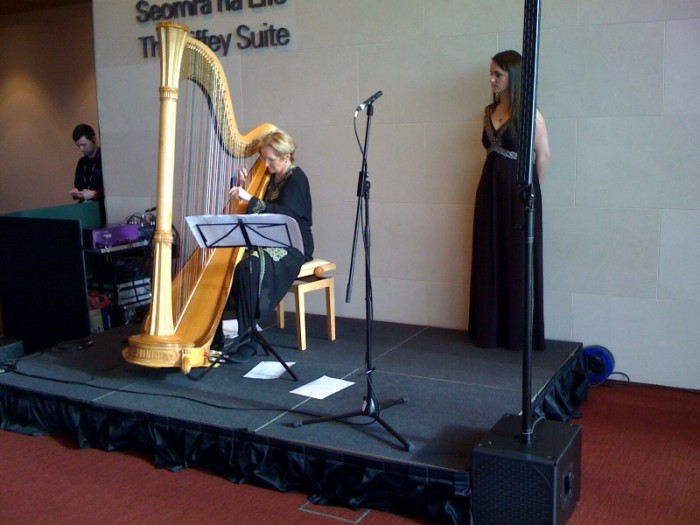I’ve been very lucky to attend Interaction 12 in Dublin last week. Everything was so well organized and still with a human touch. The conference allowed a lot of networking between presentations. There was large corridors and rooms for side conversations, which for me are the best part of going to conferences. On the background there was allways some sort of pleasant Irish music going on.

I had great conversations with Jonas Löwgren, Dan Lockton, and Anthony Dunne about one of my main concerns: how to frame Interaction Design as a cultural project. Interaction Design is more usually thought as a methodology or as a professional practice, but I prefer to think that Interaction Design is a key part of culture development for current societies.
Technology is transforming every kind of cultural values into things. When abstract things get concrete, they are not so easy to change anymore, so culture can become stale, and ultimately die. Interaction Design is the only hope for us to keep culture evolving.
So I gave a short talk about the importance of keeping a dynamic circle between vernacular and lingua franca languages.
Keeping vernacular languages alive is a great challenge for global culture diversity. I used Brazil as an example in my presentation, but our Irish hosters also have this issue. They try to keep their local language (Irish Gaelic) by putting onto signs, but people speak English most of the time in Dublin. I really love the way they write “women”. In my mothertongue that sounds like an acronym for “menina”, which means “girl”.
The main point of my talk is that we might be losing vernacular forms of Interaction Design in favor of globalized standards. In the hostel where I stayed, I found an example: the bag’s room key. This room was located on the underground level and guest themselves operated it. The key was pourposefully designed to be a hassle to use, so you would never forget it in your pockets or elsewhere, leaving the next guest without access to their bags.
This is a brilliant design that would be reproved in any ergonomic/usability/funology analysis done outside of the context. Vernacular languages are powerful because they emerge from the situation itself, not from any external entitiy, so they cannot be evaluated under universal values.
I’m not saying that designers should abandon universal values and jump into the vernacular. That would kill the possibility of making new connections with distant things, people, ideas. That for me is a great contribution Interaction Design does to culture: the possibilities for new connections, combinations, hybrids. But we need to allow the flow to continue going from lingua franca back to the vernacular. Literally, to let users speak for themselves!




